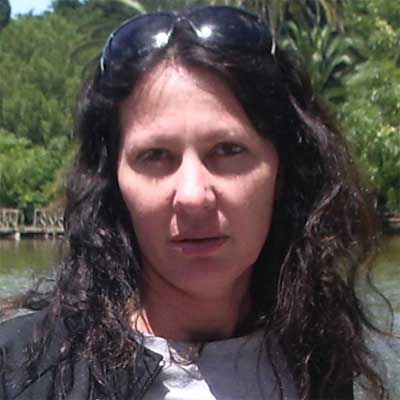Dr. Marcela Claudia Pagano
Post-doctoral FellowUniversidade de Uberaba, Brazil
Highest Degree
PostDoc Fellow in Fungi from Federal University of Minas Gerais, Brazil
Share this Profile
Highest Degree
PostDoc Fellow in Fungi from Federal University of Minas Gerais, Brazil
Share this Profile
I have been researching for the past 17 years in Argentina and Brazil. The last years have been as a post-doctoral researcher in Brazil, which have contributed for the broad experience in the field of ecology.
Nowadays, I perform approximately four papers and/or chapters per year, being an active researcher.Nowadays I am preparing a book for Springer.
I can conduct research to solve ecological problems
and to study microbes and plant physiology in different environments. In this regard, I have experience in developing initiatives and/or general discussions that could result in some new manuscripts.
From 2010, I collaborate with the Editorial board of the European Journal of Soil Biology among others.
My research interests are in the area of microbial ecology, plants and their symbioses, plant- soil ecology, phylogenetic relationship and taxonomy of plants and microorganisms. My work was carried out in natural vegetational types as well as in restored, degraded and agricultural lands. As my research is multidisciplinary, my experience in the field has been related to contact professors and researchers from several countries. The study of plant symbiotic associations is of major importance to improve our knowledge about the biochemical cycles in natural environments and, also, for use in restoration of natural areas and for endangered plant protection and conservation.
My first post-doctoral research focused on the mycorrhization of riparian and highland plants, and it aimed to highlight the occurrence and conservation of AM in these ecosystems in Brazil. My second post-doctoral research focused on the AM composition in three natural vegetational types of dry forest at CearÌ, Brazil, assessing the taxonomic and functional diversity of mycorrhizas in different caducifolious vegetation types from Brazilian semiarid. In 2011, I have worked as Assistant Professor at Federal University of SÂo JoÂo del-Rei, Brazil, teaching “Population and Community Ecology” at the Zootechny Course (Graduation level).
My third post-doctoral research focused on the formation of biochar and fertile dark earths (from Amazonia, Brazil). I also study compost and compared it with other soil amendements in order to improve soil fertility in managed ecosystems.
